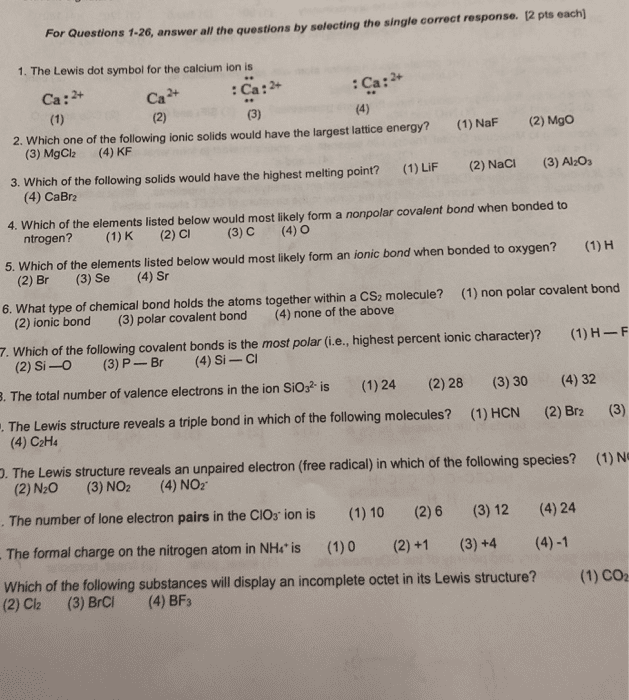CHEM 001 Lecture Notes - Lecture 17: Nonmetal, Ionic Compound, Ionic Bonding
8 views2 pages
26 Aug 2020
School
Department
Course
Professor
Document Summary
Chapter 9 and 10 each cover a different theory on chemical bonds. Both models are far from perfect, but where one fails the other succeeds. Covalent bond - sharing of electrons between two non-metal nuclei. Ionic bond - transfer of electrons between a metal and nonmetal atom. Lds represent valence electrons as dots around the atom. H follows the duet rule: it forms stable compounds when it shares 2 electrons. Most main-group atoms follow the octet rule: they tend to have 8 electrons (bonds + lone pairs) in their valence shell. Lattice energy - the h when gas phase ions form one mole of an ionic solid. M + (g) + x - (g) 1 mx (s) Lattice energy isn"t measured in a lab, but calculated using hess" law. The sum of all the reactions equals the standard enthalpy of formation of the compound. One of the summed reactions is lattice energy.
Get access
Grade+
$40 USD/m
Billed monthly

Homework Help
Study Guides
Textbook Solutions
Class Notes
Textbook Notes
Booster Class
10 Verified Answers
Class+
$30 USD/m
Billed monthly

Homework Help
Study Guides
Textbook Solutions
Class Notes
Textbook Notes
Booster Class
7 Verified Answers
Related textbook solutions
Chemistry: Structure and Properties
2 Edition,
Tro
ISBN: 9780134293936
Basic Chemistry
5 Edition,
Timberlake
ISBN: 9780134138046
Principles of Chemistry Molecular Approach
4th Edition,
Tro
ISBN: 9780134112831
Chemistry: Structure and Properties
2nd Edition,
Tro
ISBN: 9780134293936
Principles of Chemistry Molecular Approach
3rd Edition, 2014
Tro
ISBN: 9780321971944
Chemistry: A Molecular Approach
3rd Edition,
Tro
ISBN: 9780321809247
Chemistry: A Molecular Approach
5th Edition,
Tro
ISBN: 9780134874371
Principles of Chemistry: A Molecular Approach
4th Edition,
Tro
ISBN: 9780134895741
Chemistry: The Central Science
14th Edition, 2017
Brown
ISBN: 9780134414232
